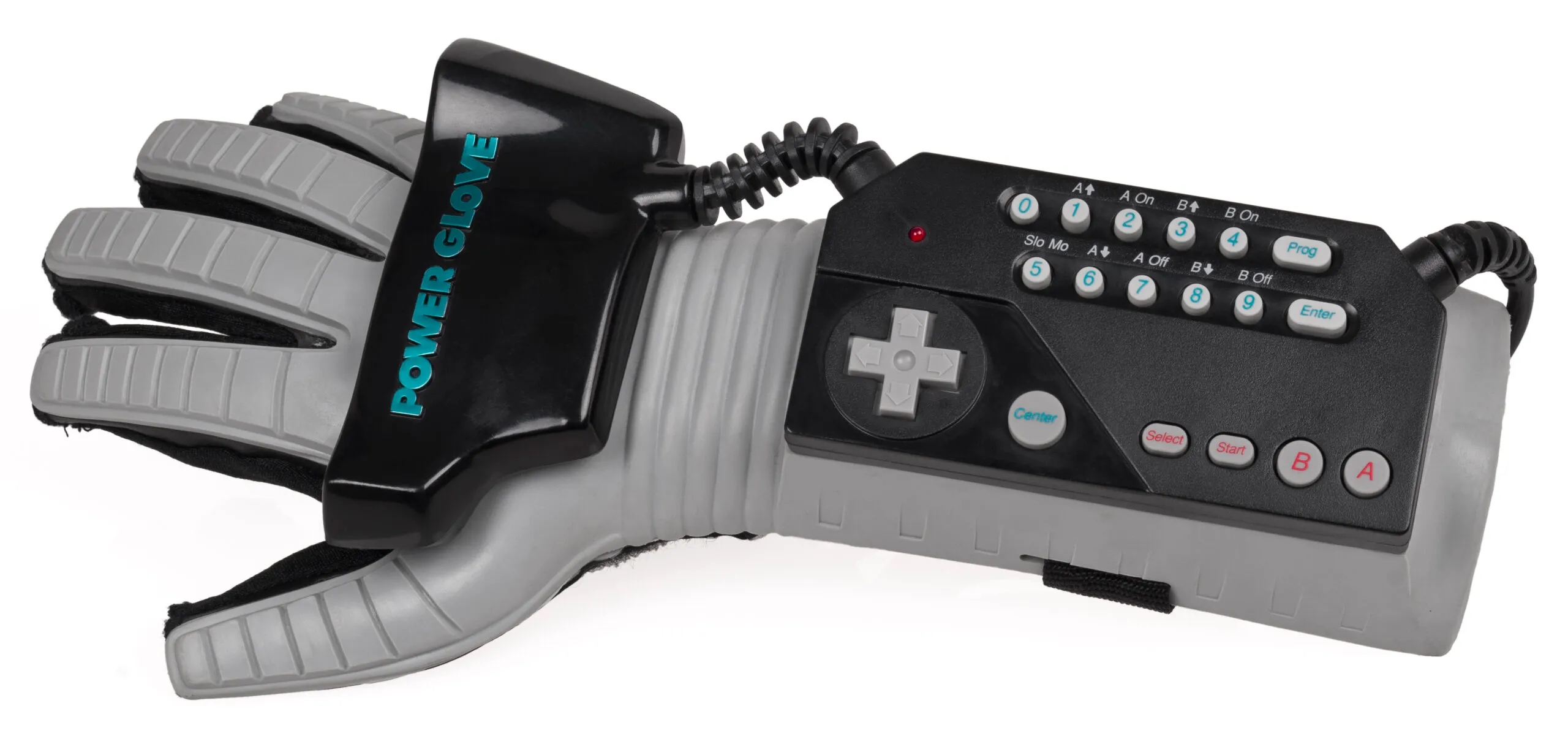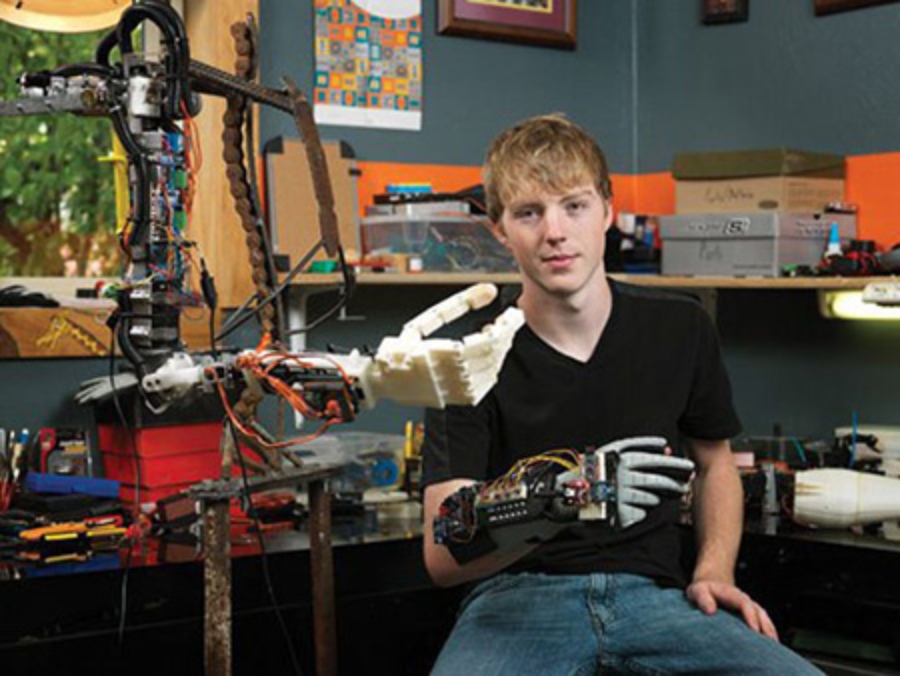Man Creates A "Robotic Arm" Out Of A Nintendo Power Glove
A man creates a "robotic arm" out of a Nintendo Power Glove. Innovation knows no bounds, and this is true in the case of Easton LaChapelle, a 17-year-old student from Colorado who created a robotic arm from a Nintendo Power Glove and 3D-printed parts. LaChapelle's innovation caught the attention of the tech community and garnered widespread media coverage.
Author:Morgan MaverickReviewer:Raven NoirMay 11, 2023257 Shares51.3K Views

A man creates a "robotic arm" out of a Nintendo Power Glove. Innovation knows no bounds, and this is true in the case of Easton LaChapelle, a 17-year-old student from Colorado who created a robotic arm from a Nintendo Power Glove and 3D-printed parts. LaChapelle's innovation caught the attention of the tech community and garnered widespread media coverage.
The idea for LaChapelle's "RobotArm" came to him when he was just 14 years old then this man creates a "robotic arm" out of a Nintendo Power Glove when he is 17 years old, how crazy is that. He was visiting a science fair and saw a robotic hand. Inspired by the concept, he set out to create his own version of a robotic arm. However, he quickly realized that such a device would be too expensive for most people to afford.
That's when he stumbled upon a Nintendo Power Glove. The device, which was originally released in 1989, was designed for use with the Nintendo EntertainmentSystem. It had a range of sensors that could detect hand movements and translate them into on-screen actions.
LaChapelle realized that he could use the Power Glove's sensors to control a robotic arm. He set out to modify the glove by adding a series of sensors and microcontrollers. He then used a 3D printer to create the mechanical components of the arm.
The resulting device was a remarkable innovation. LaChapelle's RobotArm was not only affordable, but it was also functional. The arm could be controlled by hand movements, and it was capable of performing a range of tasks, including picking up objects and manipulating them.
LaChapelle's creation caught the attention of NASA, and he was invited to present his invention at the International Space Station Research and Development Conference in 2013. NASA was impressed by LaChapelle's innovative use of 3D printing and low-cost technology.
Since then, LaChapelle has continued to develop his RobotArm. He has incorporated a range of new sensors and controllers, making the arm even more versatile and functional. He has also made the design open-source, allowing others to build their own versions of the arm.
LaChapelle's invention is just one example of the power of innovation and the potential of 3D printing technology. The ability to create complex mechanical components using a 3D printer has opened up a world of possibilities for inventors and innovators.
In the future, we can expect to see more innovations like LaChapelle's RobotArm. As 3D printing technology becomes more advanced and affordable, it will become easier for people to create their own devices and inventions. We may see a new wave of inventors and entrepreneurs, each using 3D printing to bring their ideas to life.
In addition to the DIY robotic arm project using a Nintendo Power Glove, there have been other projects that have repurposed gaming peripherals for robotics purposes.
For example, the Microsoft Kinect sensor, which was originally released for the Xbox 360 gaming console, has been used in robotics applications for gesture recognition and motion tracking.
For example, in 2018, a group of engineering students from Rice University in Houston created a low-cost, portable device that can quickly detect and diagnose skin cancer.
The device was created by modifying a standard, off-the-shelf camera with a 3D-printed camera mount and LED lights. The students were able to create this device for under $500, making it much more affordable than traditional dermatoscopes.
In another example, a group of researchers at the University of California, Berkeley developed a robotic exoskeleton that uses a Wii Remote controller as a user interface. The exoskeleton was designed to assist individuals with movement disorders in walking, and the Wii Remote was used to provide intuitive control of the device.
In another example, a team of engineers and scientists from Harvard University and Boston Children's Hospital created a "soft robot" that can be controlled using magnets. The robot is made of a flexible, silicone material and can be used for a variety of medical applications, such as drug delivery and tissue engineering.
These examples demonstrate the potential for creativity and resourcefulness when it comes to using technology to solve problems. By repurposing everyday objects and materials, individuals and teams can create innovative solutions that are both cost-effective and practical.
However, it is important to note that repurposing gaming peripherals for robotics purposes may require some technical expertise, and safety precautions should always be taken when working with robots. Additionally, some gaming peripherals may not be suitable for certain robotics applications, so it is important to carefully evaluate their capabilities before using them in a project.
DIY Robotic Arms Using Nintendo Power Glove
Robotic arms are an exciting and fascinating piece of technology. They have a wide range of uses, from manufacturing to healthcare to entertainment.
However, building a robotic arm can be an expensive and challenging task, requiring a lot of technical knowledge and specialized components. However, one creative maker found a unique solution to building a robotic arm, using a Nintendo Power Glove.
Easton LaChapelle, a teenager from Colorado, first became interested in robotics when he was just 14 years old. He saw a video online of a robotic hand, and it inspired him to start working on his own. He began by building a small robotic hand out of legos and servos, and from there he continued to refine his design and add more functionality.
Eventually, LaChapelle began experimenting with 3D printing and using the Nintendo Power Glove as the controller for his robotic arm. The Power Glove was a popular accessory for the Nintendo Entertainment System in the 1980s, but it was discontinued due to poor sales. However, the glove had a wide range of sensors and could detect hand movements, making it an ideal controller for a robotic arm.
LaChapelle created a custom mount for the Power Glove and connected it to a series of servos that controlled the arm's movements. He also used a 3D printer to create the arm's components and designed his own control software to program the arm's movements.
The final result was an impressive robotic arm that could be controlled using hand gestures detected by the Power Glove. The arm was capable of a wide range of movements, including picking up and manipulating objects, and could be programmed to perform specific tasks.
LaChapelle's creation was impressive not just for its technical capabilities, but also for its affordability. The entire project cost him only $250, a fraction of what a commercial robotic arm would cost. This makes the technology more accessible to hobbyists and students who may not have access to expensive equipment.
In addition to the cost savings, LaChapelle's creation also has the potential for medical applications. He has been working on developing a prosthetic arm that could be controlled using brain signals, and the Power Glove technology could be used as an affordable and accessible controller for this type of prosthetic.
Overall, the Nintendo Power Glove may have been a commercial flop in the 1980s, but it has found new life as a controller for DIY robotic arms. LaChapelle's innovative creation is just one example of the endless possibilities that can be achieved through creative problem-solving and the use of accessible technology.
People Also Ask
What Is A Nintendo Power Glove?
A Nintendo Power Glove is a controller accessory for the Nintendo Entertainment System video game console.
How Does A Robotic Arm Made From A Nintendo Power Glove Work?
The robotic arm made from a Nintendo Power Glove uses sensors on the glove to control the movement of 3D-printed parts that make up the arm.
What Inspired The Creation Of A Robotic Arm From A Nintendo Power Glove?
The creator, Easton LaChapelle, was inspired by a family friend who was born without a left arm and wanted to create a low-cost, functional prosthetic for them.
How Much Did It Cost To Make The 3D-printed Robotic Arm?
Easton LaChapelle was able to create the robotic arm for just $250 using 3D printing technology.
What Other Inventions Has Easton LaChapelle Created?
In addition to the robotic arm, Easton LaChapelle has also created a brain-powered prosthetic arm and a full-sized humanoid robot.
Conclusion
A man creates a "robotic arm" out of a Nintendo Power Glove and 3D-printed parts and it is a testament to the power of innovation and the potential of 3D printing technology.
His creation caught the attention of NASA and the tech community, and he continues to develop and improve his invention. LaChapelle's innovation is a reminder that the only limit to what we can create is our imagination.

Morgan Maverick
Author
Morgan Maverick is an unorthodox news reporter driven by an insatiable hunger for the truth. Fearless and unconventional, he uncovers hidden narratives that lie beneath the surface, transforming each news piece into a masterpiece of gritty authenticity. With a dedication that goes beyond the boundaries of conventional journalism, Morgan fearlessly explores the fringes of society, giving voice to the marginalized and shedding light on the darkest corners.
His raw and unfiltered reporting style challenges established norms, capturing the essence of humanity in its rawest form. Morgan Maverick stands as a beacon of truth, fearlessly pushing boundaries and inspiring others to question, dig deeper, and recognize the transformative power of journalism.

Raven Noir
Reviewer
Raven Noir is a captivating and enigmatic news reporter who unravels mysteries with a relentless pursuit of truth. Possessing an insatiable curiosity and an astute mind, Raven delves into the depths of complex stories, unearthing secrets that lie beneath the surface. With a masterful grasp of deduction and observation, Raven stands as a beacon of fearless investigation.
In the realm of journalism, Raven is known for his enigmatic presence, drawing people in with an aura of intrigue. Driven by an unwavering passion for unveiling the truth, Raven Noir continues to shed light on the darkest corners of society. Through captivating storytelling and unwavering determination, he challenges conventions and uncovers enigmatic secrets that lie just beyond the surface.
Latest Articles
Popular Articles
